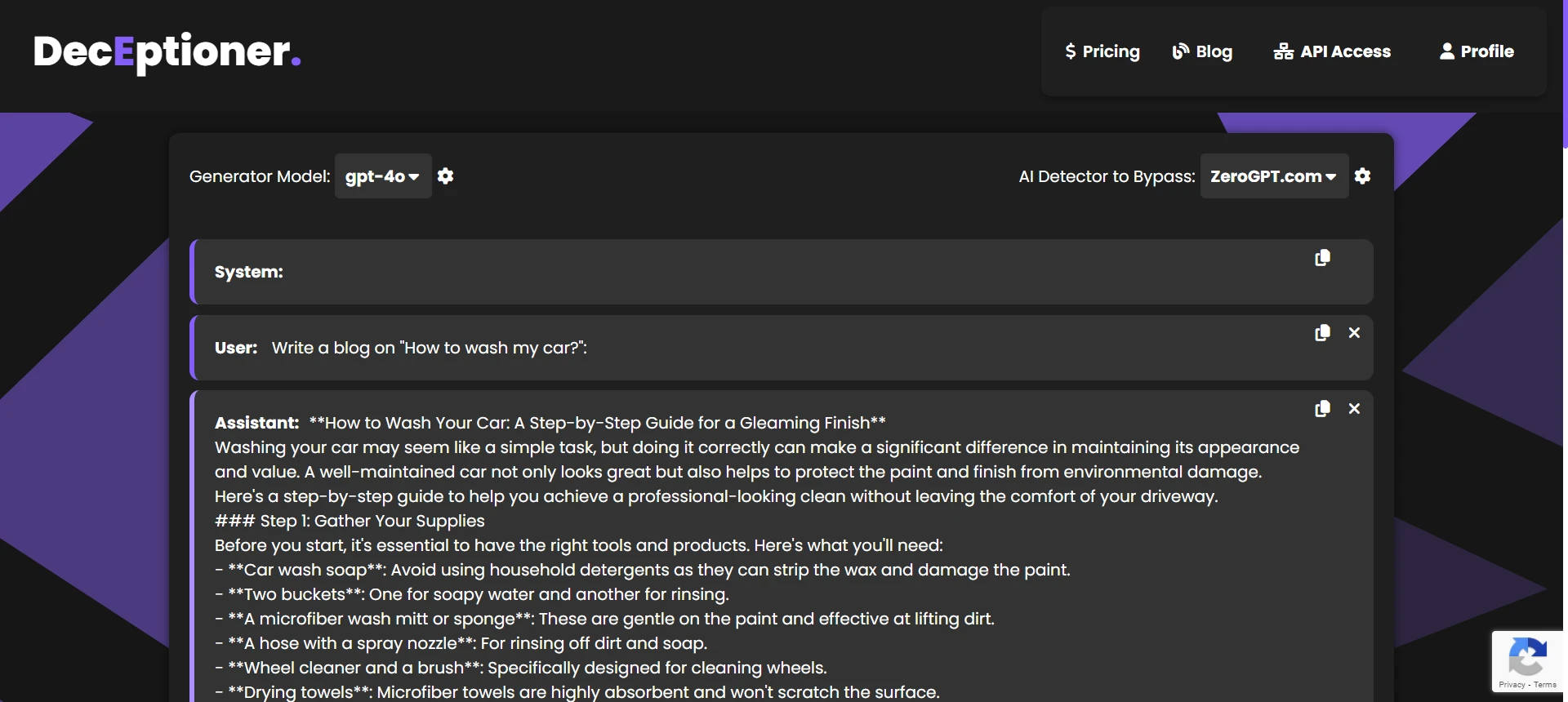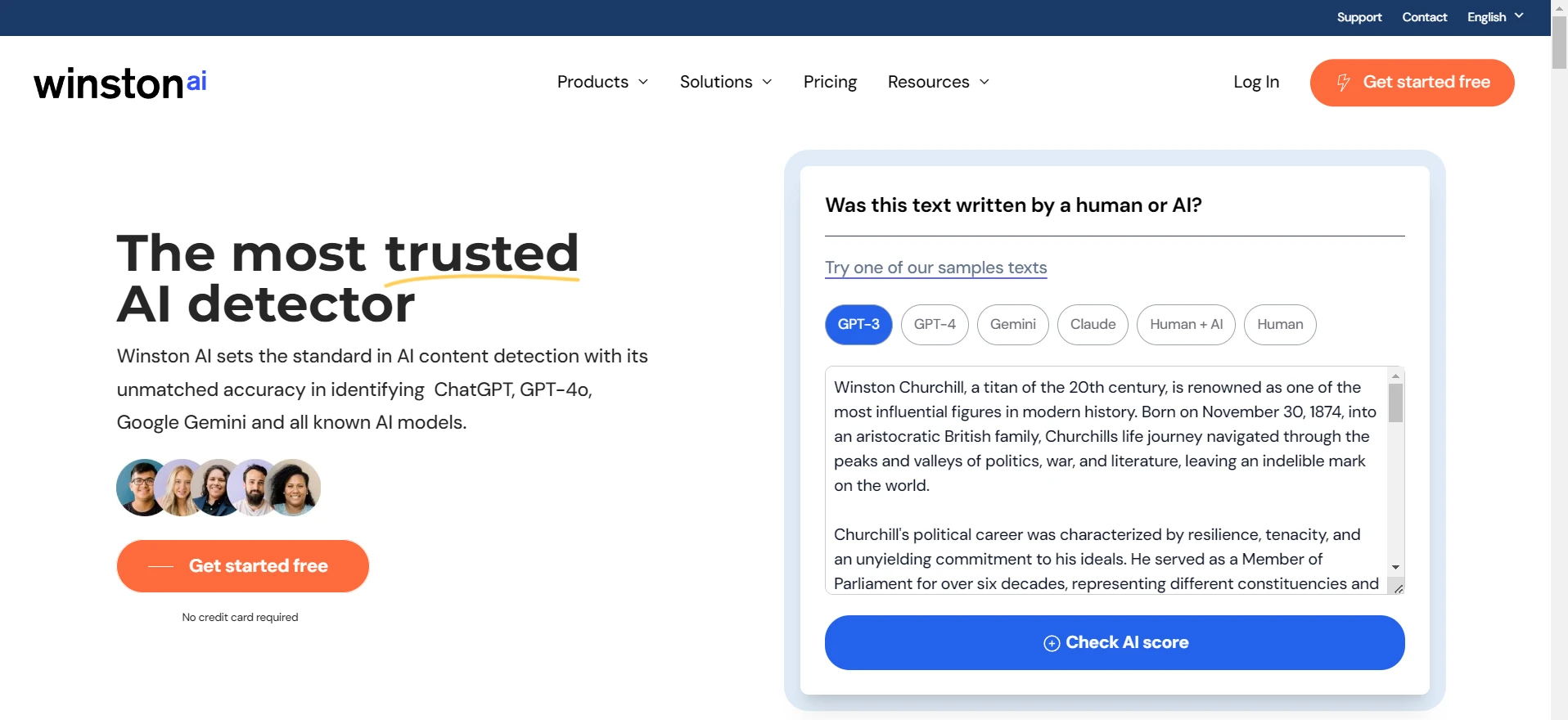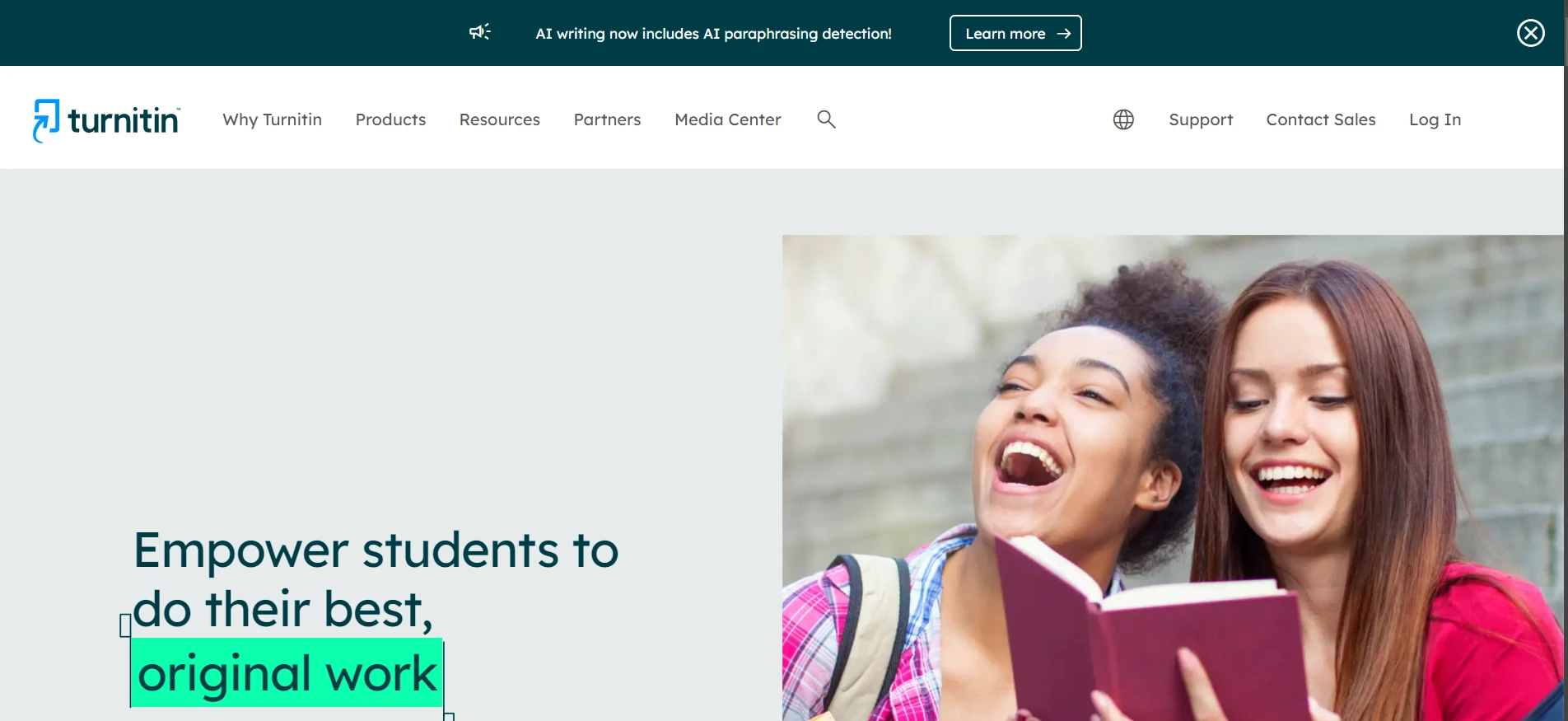As we all know people use Deepl for translations, but many wonder if it can hide AI writing from AI detectors. Is it the same as using something like Quillbot or Wordtune? The short answer is NO. The longer answer is that the devil lies in the details. Keep reading to know more about it.
1. Data collection
We created four text buckets to see how Deepl affects AI detection:
| Step | What we did | Why it matters |
|---|---|---|
| Source four text buckets |
|
This gives us a 2 × 2 grid (AI vs Human, Deepl vs No-DeepL) so we can isolate the effect of translation from the effect of authorship. |
| Keep passages comparable | We used a fixed length range (~150–200 words) and neutral topics (history, tech, lifestyle). | This removes any topic-specific or length-based bias in the detectors. |
We then ran these passages through two popular AI detectors: ZeroGPT and GPTZero. We wanted to see if Deepl can hide AI content or create more confusion for human text.
2. Main questions and results
| Question we’re asking | What the data shows | Why it matters |
|---|---|---|
| Does Deepl “hide” AI-generated text from detectors? | No. AI text run through Deepl (“AI + Deepl”) still gets very high scores: ZeroGPT → average ≈ 86 %, median ≈ 100 % GPTZero → average ≈ 71 %, median ≈ 100 %. |
Deepl’s translation doesn’t meaningfully lower either detector’s confidence. In fact, ZeroGPT’s average AI score is higher after Deepl. |
| Does Deepl create false positives for human text? | Mixed. For “Human + Deepl,” ZeroGPT’s average score jumps to ≈ 49 % (median 50 %), while GPTZero stays near 0 %. | ZeroGPT is more likely to mis-classify Deepl-translated human text as AI. GPTZero is not so affected. |
| Baseline performance (no Deepl) | Human texts get very low scores (ZeroGPT ≈ 30 %, GPTZero ≈ 2 %). AI texts are flagged strongly (both near 100 %). | Confirms the detectors work as expected on un-translated AI and un-translated human text. |
Explaining the “mean” and “median” scores
We used two big words: mean and median. Mean is just the “average” of all the detection scores. For example, if we have five samples that got AI scores of 80, 90, 100, 60, and 90, the mean would be (80+90+100+60+90) / 5. The median is simply the middle score when you line them up in order so in the example above, the middle one is 90. That means that half the scores are low and half the scores are high.
Interpretation of the visuals (like box-plots & bar charts)

Box-plots – Tall boxes for AI and AI + Deepl show that almost all the text is labeled AI. For the Human + Deepl category, ZeroGPT’s box is around the 50 % mark, which is a dangerous borderline for many institutions that consider 50 % as an AI threshold.
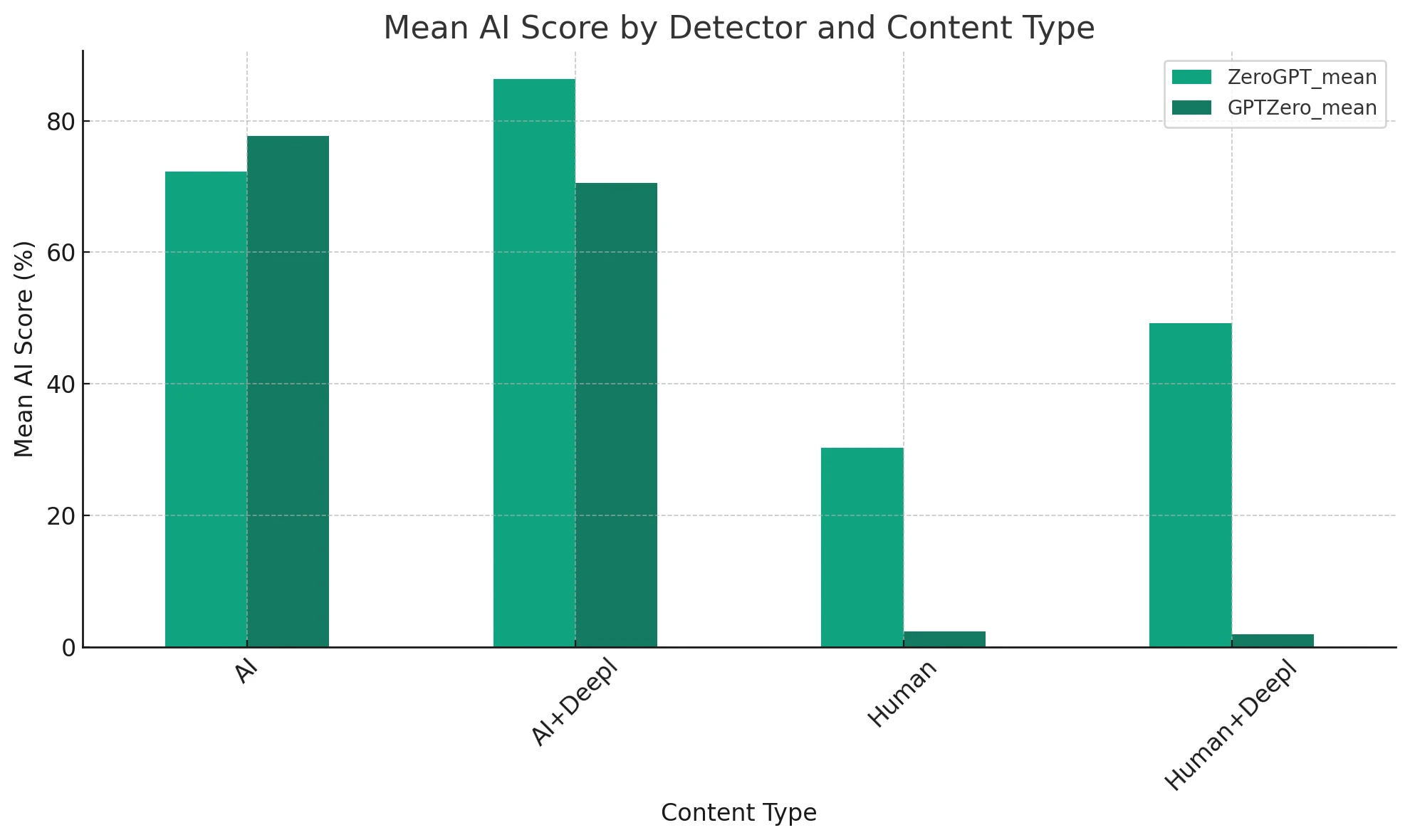
Bar chart of means – ZeroGPT’s bars follow the order: AI + Deepl > AI > Human + Deepl > Human. For GPTZero, AI and AI + Deepl are similarly high, while both human categories are very low.
Also Read: Can Turnitin Detect Deepl Translation?
Why Deepl gets detected so easily?
It is the same reason any normal translator or normal paraphraser gets flagged: they never advertise that they can bypass AI detectors. Deepl is mostly built for accurate translations not for fooling AI detection. Hence, if it is not made to accomplish this task it won't be able to do it. Simple as that. If you really want to bypass AI detectors then you need to use dedicated paraphrasers like Deceptioner.
Detector-specific quirks
Our experiment shows that ZeroGPT is quite sensitive to Deepl’s rewriting—even when the original text is human. That means it can produce false alarms (false positives) if the text was human but run through Deepl. On the other hand, GPTZero is far less influenced by Deepl’s paraphrasing and keeps its human classification correct.
Practical takeaway
If your main objective is to mask AI authorship, Deepl is definitely not the tool for it. But keep in mind, if you rely on ZeroGPT to catch AI content, Deepl might fool it sometimes for human text. That’s because ZeroGPT might end up marking real human writing as AI. GPTZero, however, remains accurate for the human text.
Limitations to keep in mind
- We only used two detectors in this evaluation: ZeroGPT and GPTZero. There are many more AI detectors out there.
- Our data was ~80 samples per category, so it is not a huge sample. Larger or more diverse samples could change the results.
- We used Deepl with default settings. We did not explore advanced tone options or integrating a custom glossary, which might change the final text style.
Frequently Asked Questions
Q1. Does Deepl “hide” AI text so it won’t be detected?
No, Deepl is not built for it. Our study found that AI text passed through Deepl still got flagged loudly by ZeroGPT and GPTZero.
Q2. Does Deepl cause false positives on human text?
Yes, especially with ZeroGPT. We observed that its average AI score for real human text climbs up to about 49 % once you run it through Deepl. GPTZero rarely mislabeled them as AI.
Q3. Are these detectors perfect?
No, all AI detectors are prone to false-positives or false-negatives. They also get updated frequently, so the results can change anytime.
Q4. Is using Deepl a form of plagiarism?
No, translating your own content is not plagiarism. The issue is about potentially getting flagged as AI if you are turning in your text to places that run ZeroGPT or GPTZero checks.
The Bottom Line
Deepl is great for translations but it fails to bypass AI detectors. If you pass AI writing through it, you will most likely still get flagged as AI with a very high score. And ironically, if you use Deepl on your human text, ZeroGPT might label you as AI some of the time, though GPTZero is more accurate for such cases. So if you want to genuinely hide AI text, use specialized tools like Deceptioner.

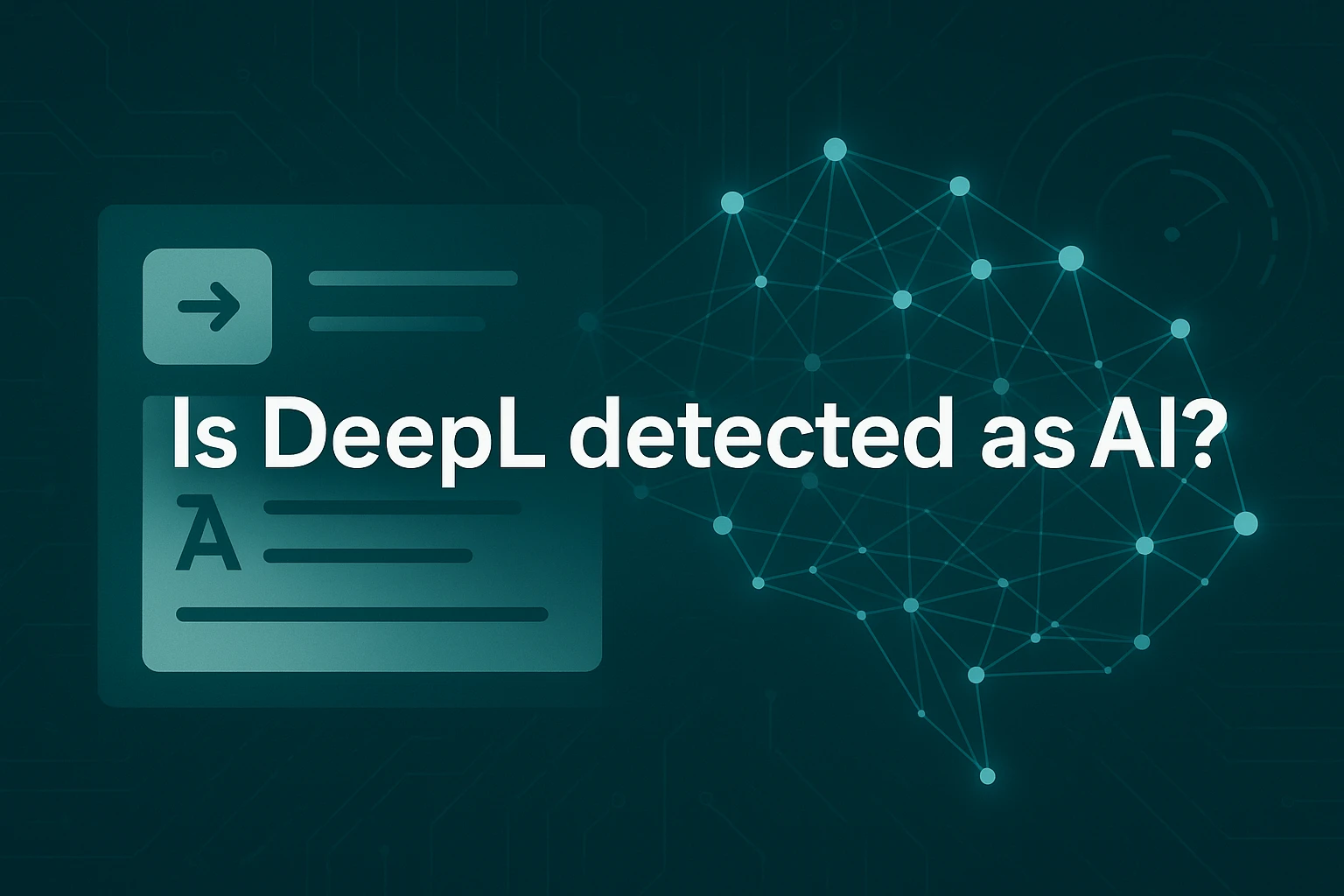
![[STUDY] Can Phrasly AI Humanizer Bypass ZeroGPT?](/static/images/can-phrasly-ai-humanizer-bypass-zerogptpng.webp)
![[STUDY] Can Phrasly AI Bypass Turnitin?](/static/images/can-phrasly-ai-bypass-turnitinpng.webp)
![[HOT TAKE] Is Winston AI or GPTZero more accurate?](/static/images/is-winston-ai-or-gptzero-more-accuratepng.webp)
![[NO NONSENSE ANSWER] Is Turndetect Permanently Down?](/static/images/is-turndetect-downpng.webp)
